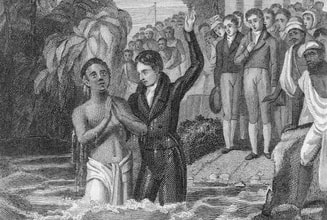 “After these things I looked, and behold, a great multitude which no one could number, of all nations, tribes, peoples, and tongues standing before the Throne and before the Lamb, clothed with white robes, with palm branches in their hands, and crying out with a loud voice, saying: Salvation belongs to our God who sits on the Throne and to the Lamb!” Revelation 7: 9-10 Unprecedented The great era of missionary advance was the 19th century. The considered judgement of church historian Kenneth Scott Latourette is that: “Never had any other set of ideas, religious or secular, been propagated over so wide an area by so many professional agents maintained by the unconstrained donations of so many millions of individuals.” Restricted At the beginning of the 19th century, Protestant Christianity was concentrated in Europe and North America. Except for some small Christian enclaves, Asia was almost untouched by the Gospel. Africa was still the “dark continent” - except for the ancient Copts in Egypt, Ethiopia and Sudan and a small number of Dutch settlers at the Southernmost tip of Africa, at the Cape of Good Hope. 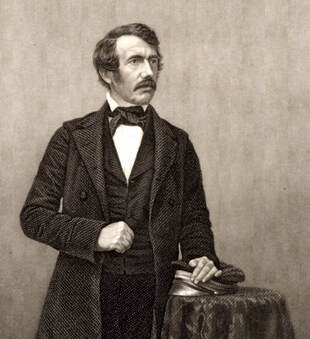 The Greatest Advance of Christianity in History However, by the end of the 1800’s, Christianity was a world religion with churches established in almost every country on earth. The vigorous energy and momentum of the Protestant missionary movement in the 19th century was unparalleled in human history. The 19th century missionary movement had a revolutionary influence upon cultures, out of all proportion to its modest numerical strength. It reduced hundreds of illiterate languages to writing, produced libraries of books, pioneered tens of thousands of schools, developed movements for the relief and prevention of human suffering, introduced modern medical skills to save millions of lives from tropical and other diseases, introduced advanced methods of agriculture to provide adequate food for millions of previously malnourished people, and brought an end to cannibalism, human sacrifice, infanticide, burning of leprosy patients, widow burning, slavery and numerous other prevalent social evils. The result of this momentous missionary enterprise was the rapid expansion of Christianity throughout Africa, Asia and the Pacific Islands. Against All Odds Yet the success of this bold missionary endeavour was by no means certain. From the beginning skeptics laughed at the audacity of these pioneers, discounting any possibility of success. The British East India Company’s attitude was published in these words: “The sending out of missionaries into our Eastern possessions (is) the maddest, most extravagant, most costly, most indefensible project which has ever been suggested by a moon struck fanatic! Such a scheme is pernicious, imprudent, useless, harmful, dangerous, profitless, fantastic.” (20 Centuries of Christianity, page 279). 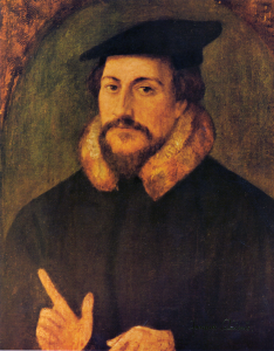 Underestimated Pioneer missionary, William Carey, and his co-workers, were belittled as “fools, madmen, tinkers, Calvinists and schematics!” Their preaching was stereotyped as “puritanical rant of the worst kind.” (William Carey, S. Pearce Carey, 1923). The Edinburgh Review editorialised: “We see not the slightest prospect of success; we see much danger in making the attempt.” Extraordinary In light of the incredible obstacles, overwhelming distances, very real dangers and relentless opposition involved, how do we explain the sustained explosion of Protestant energy aimed at winning the world for Christ? Calvin’s Vision of Victory In Calvin’s Institutes, the Swiss Reformer wrote of “the Magnificence” of Christ’s reign prophesied in Daniel 2:32-35; Isaiah 11:4; Psalm 2:9 and Psalm 72 where Christ will rule the whole earth. “Our doctrine must tower unvanquished above all the glory and above all the might of the world, for it is not of us, but of the living God and His Christ” who will “rule from sea to sea and from the river even to the ends of the earth.” Calvin’s missionary zeal is attested to by the fact that within 25 years, from the time John Calvin began his ministry, there were 2,000 Calvinist churches and about half a million Calvinists in France alone! Calvin sponsored missions throughout Europe and even as far afield as Brazil. A Battle for Survival However the 16th and 17th centuries were primarily a battle for survival for the Protestants. While they succeeded in winning whole nations to Christ (Hesse, Saxony, Prussia, England, Scotland, Holland, Norway, Sweden, Denmark) they had to fight for their lives against Catholic repression, invasions and intrigues. 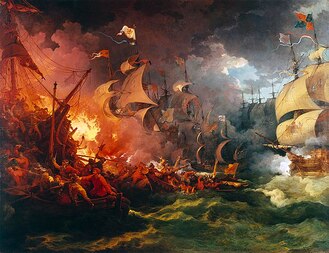 The Spanish Armada During the first century of Protestant history the world powers were Spain and Portugal. These Roman Catholic empires dominated the seas and the overseas possessions of Europe. Only after the English defeated the Spanish Armada (1588) did the possibility arise of Protestant missionaries crossing the seas. As the Dutch and British grew in military and naval strength they were able to challenge the Catholic dominance of the seas and the new continents. Bold Pioneers Some Protestants ventured out across the oceans to extend God’s kingdom, including John Eliot (1604-1690). Eliot mastered the Algonquian language of the Indians in Massachusetts and became a pioneer Bible translator. Eliot’s biography: “The Triumphs of the Reformed Religion in America: or the Life of the Renowned John Eliot.” written by Cotton Mather and published in 1702 was to inspire many others into missions in succeeding generations, including David Brainerd and William Carey. 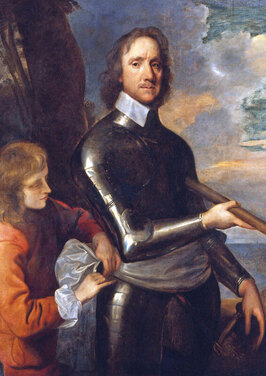 Cromwell’s Missionary Vision Under Oliver Cromwell, in 1649, the English Parliament established the Society for the Propagation of the Gospel in New England. Over £15,900 (an enormous sum of money in the 17th century) was donated towards this first evangelical missionary society. Cromwell proposed a comprehensive plan for world evangelism, dividing up the world into four great mission fields. Unfortunately the death of Cromwell and the restoration of the monarchy in England under Charles II set back the cause of missions. Moravian Missions During the 18th century there were several Protestant attempts to reach distant peoples with the Gospel. These efforts were mostly carried out by Pietists like the Moravians of Count von Zinzendorf. Their work focused on converting individuals in or near some European colony. The Christian groups created by these Pietists were tiny islands of believers engulfed in oceans of heathens. The Father of Modern Missions However, the missionary movement launched by William Carey thought in comprehensive terms of evangelising whole countries and discipling whole populations. Carey was the first to articulate the need for Christianity to be firmly rooted in the culture by transforming tradition and the laws of the land in which it is planted. For these and many other reasons Carey is called “the Father of Modern Missions.” 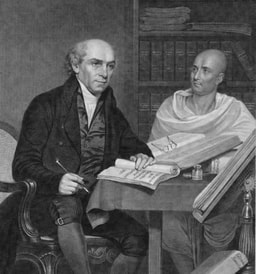 British Missions The launch of the modern missionary movement by William Carey and the “Particular (Calvinist) Baptist Society for the Propagation of the Gospel Amongst the Heathens” marked the entrance of Great Britain into world missions. Throughout the 19th century Britain was to contribute more men and money to the cause of Protestant missions worldwide than any other country. K.S. Latourette in “A History of the Expansion of Christianity” (1945) records that in 1900, of the 13,607 Protestant foreign missionaries, 5,901 were from the British Isles and 4,110 from the United States. In that one year, of the $17,161,092 donated to Protestant missions, $8,225,645 was from the British Isles and $5,403,048 from the United States). The concept of Britain as a Christian nation with a God given responsibility for world evangelism was deeply rooted in 19th century Victorian society. Acts 13 Breakthrough The means used to accomplish the tremendous task of world evangelisation was innovated by William Carey (and inspired by Acts 13:1-5). When he wrote his Enquiry he asked: What would a trading company do? Carey proposed the formation of companies of dedicated Christian pastors and laymen. These companies should appoint committees to collect and evaluate information, to raise funds and to select suitable missionaries to send to the foreign mission fields. Evangelical Energies Unleashed These voluntary societies transformed 19th century society. It made possible interdenominational action together for clearly defined purposes. It altered the traditional power base by encouraging lay leaders and tapping into the wealth of talents of rank and file Protestants. It also inspired countless other voluntary societies, to fight the slave trade, improve working conditions for children, establish Sunday Schools and a host of other causes. 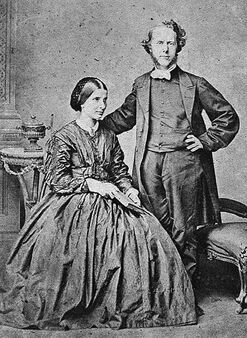 Volunteers and Religious Freedom The Protestant missionary movement of the 19th century was also remarkable because it advanced (with very few exceptions) without either state control or state support. Unlike the Catholic missions of Xavier, Las Cases and Ricci, the Protestant missionaries were financed by voluntary donations and only advanced by the power of prayer and persuasion. Since the time of the Emperor Constantine, the propagation of religious beliefs had tended to be carried out with the active support of kings and princes. Mass conversions, such as under Clovis, king of the Franks, Prince Vladimir of the Russians or King Olaf of the Vikings, were the accepted means of extending the Faith. The Protestant missionaries of the 19th century, however, had found a way to engage in missions while upholding religious freedom. The Inspiration Behind the Greatest Century of Missions However, we still need to ask: What inspired the pervasive determination in 19th century Protestant churches to firmly plant the Gospel in every nation on earth? The answer is: Calvinism and Post-Millennialism. Reformation and Revival The passion to preach the Gospel in every nation and to win heathen tribes to Christ sprang from those Reformed churches, in England and America, which had been most deeply influenced by the Great Evangelical Awakening of the 18th century. These revivals were based upon the study and proclamation of the Reformed teachings of the Puritans. The two primary human instruments whom God was pleased to use in the 18th century Revivals were Jonathan Edwards and George Whitefield. The Great Awakening Edwards was a Calvinist whose books reasserted the faith and conduct of the Puritans. His sermon, “Sinners in the Hands of an Angry God”, was used by God to spark the Great Awakening. Edwards’ book “The Life and Diary of Rev. David Brainerd” (published in 1749) was mightily used to inspire the 19th century Missionary movement. Jonathan Edwards himself invested the last 7 years of his life as a missionary amongst Indians and frontiersmen at a frontier settlement in America. 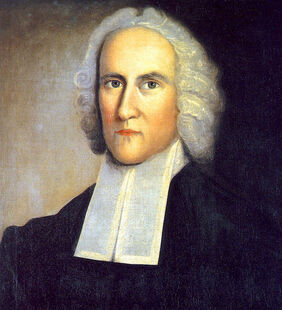 The Power of Prayer One of Jonathan Edwards books was “A Humble Attempt to Promote an Explicit Agreement and Visible Union of God’s People through the World, in Extraordinary Prayer, for the Revival of Religion and the Advancement of Christ’s Kingdom on Earth…” (a rather long title, but a very descriptive one). When William Carey set sail for India one of his treasured possessions which he carried with him was this book by Jonathan Edwards. Reformed Roots All the founders and missionaries of the original prototype Baptist mission launched by William Carey in 1792, were Reformed. When they came under criticism for their “strict Calvinism” and being “followers of Jonathan Edwards”, Carey’s colleague, Andrew Fuller, responded that if their critics “preached Christ half as much as Jonathan Edwards” had, then “their usefulness would be double what it is!” He added that it was most significant that the mission to the East had originated with men of Reformed principles and if it ever fell into the hands of men who rejected these principles it would become ineffective for God’s Kingdom. (Life of Andrew Fuller by John Ryland). Calvinist Convictions The Serampore Mission Principles explicitly committed all their missionaries to the Reformed doctrines of Grace. Similarly, the London Missionary Society (founded in 1795), which was thoroughly interdenominational, was most outspoken that “the doctrines of grace generally known as Calvinism, provided a common platform for the best missionary action.” The first generation of LMS missionaries had no difficulty with signing the full Westminster Confession. 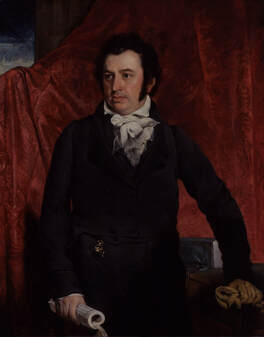 Robert Morrison and Henry Martyn Robert Morrison, the pioneer missionary to China in 1807, was a strict Calvinist from the Church of Scotland. Henry Martyn who sailed for India in 1805, was also Reformed. In 1812, his pioneer Bible translation ministry in Persia was cut short by his death at age 31. George Whitefield and Jonathan Edwards George Whitefield, whose ministry along with Jonathan Edwards was so inextricably linked to the great revivals out of which the 19th century missionary movement was launched, was unashamedly a Calvinist: “You know how strongly I assert all the doctrines of Grace as contained in the Westminster Confession of Faith and in the (Thirty Nine) Articles of the Church of England.” (Whitefield, Tyerman). Whitefield testified that he learned much of his theology from Puritan books such as Matthew Henry’s Commentary on the Bible. Puritan Publications During the great 18th century Revivals many Puritan books were reprinted: John Owen, John Bunyan, Hooker, Shephard, Guthrie and many others. This revival of interest in the Puritans led Augustus Toplady (author of “Rock of Ages”), John Newton (who wrote “Amazing Grace”), Charles Spurgeon and many other churchmen to become Calvinists. The British Museum catalogue lists eleven editions of Matthew Henry’s Commentary on the Bible and two American reprints. It is calculated that more than 200,000 single volumes of Matthew Henry’s commentary had been circulated prior to 1840 alone. Revitalised and Refreshed This revitalised Protestantism, refreshed with Calvinistic writings and preaching, rose to the challenge of world evangelisation with a zeal and boldness never before seen in history. Many Christians had engaged in evangelism and missions before, but “never before had the followers of any faith formulated comprehensive plans covering the entire surface of the earth to make these purposes effective.” (A History of the Expansion of Christianity, by Latourette).  The Puritan Hope Ian Murray in “The Puritan Hope” concludes: “The Theological impetus which lay behind the new missionary era came from the Puritan books of the 17th century, which must be classified as Calvinistic.” An Eschatology of Victory An additional distinctive which characterised the greatest century of missionary advance was the eschatology of victory. This optimistic view of the future was often spoken of by Whitefield: “when the earth shall be filled with the knowledge of the Lord, as the waters cover the sea” (Habakkuk 2:14). Jesus Shall Reign In the immortal words of Isaac Watts’ hymn published in 1719 (based on Psalm 72): “Jesus shall reign where’er the sun Doth his successive journey run; His Kingdom stretch from shore to shore, Till moons shall wax and wane no more” Post Millennial The first generation of missionaries of the 19th century were overwhelmingly post-millennial. The driving power of this prophetic hope was prominent in the speeches and sermons at the inaugural meetings of the Baptist Missionary Society (1792), the London Missionary Society (1795), the New York Missionary Society (1797), the Church Missionary Society (1799) and the Glasgow Missionary Society (1802), amongst many others. Idols for Destruction William Carey wrote in the Form of Agreement at Serampore: “He who raised the sottish and brutalised Britons to sit in heavenly places in Christ Jesus, can raise these slaves of superstition, purify their hearts by faith, and make them worshippers of the one God in spirit and in truth. The promises are fully sufficient to remove our doubts, and to make us anticipate that not very distant period when He will famish all the gods of India, and cause these very idolaters to cast their idols to the moles and to the bats, and renounce for ever the work of their own hands.” “The Lord will be awesome to them, for He will reduce to nothing all the gods of the earth; people shall worship Him, each one from his place, indeed all the shores of the nations.” Zephaniah 2:11 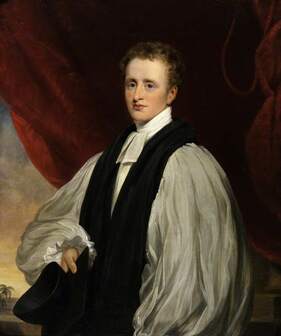 The Greatest Century of Hymn Writing Not only was the 19th century the greatest century of missions, but probably also the greatest century for composing some of the best-loved hymns. Many popular hymns of that time echoed this eschatology of victory, including “All Hail the Power of Jesus Name”, “Zion’s King Shall Reign Victorious”, “Jesus Shall Reign” and “From Greenland’s Icy Mountains.” This hymn was composed by Reginald Heber who gave his life for the Gospel of Christ in Calcutta, India: “Energised Energised with doctrines and hymns such as these, the Protestant churches in the 19th century were inspired to “expect great things from God and to attempt great things for God”. The Noblest Object In the words of Alexander Somerville in 1886, this was “a new enterprise on behalf of the noblest object that can engage the enthusiasm of man, the salvation of millions!” The Great Commission is our Supreme Ambition Scotland’s first foreign missionary, Alexander Duff, declared: “Oh, what promises are ours, if we had only faith to grasp them! What a promise is that in the Great Commission - Go and make disciples of all nations, and lo I am with you, even to the end of the world! We go forth amongst the hundreds of millions of the nations; we find gigantic systems of idolatry and superstition consolidated for thousands of years… they tower as high mountains. But what does faith say? Believe and it shall be. And if any Church on earth will realise that faith, to that Church will the honour belong of evangelising the nations, and bringing down the mountains.” 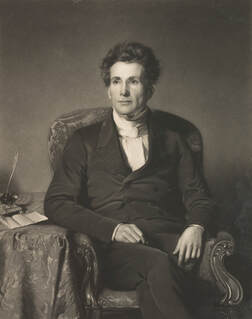 Changing History So they went out, thousands of pioneer Protestant missionaries. They expected their life-transforming message to change history, and it did! Transforming Nations by Changing Lives May God be merciful to grant a Revival of those Biblical doctrines that will inspire a similar Missionary vision and effectiveness in the 21st century. By God’s grace, and inspired by the same Biblical principles and missionary vision of the 19th century Missionary movement, the 21st century may become an even greater century for fulfilling the Great Commission. “In His days the righteous shall flourish… He shall have dominion also from sea to sea and from the river to the ends of the earth. Those who dwell in the wilderness will bow before Him, and His enemies will lick the dust… Yes, all kings shall fall down before Him, all nations shall serve Him… All nations shall call Him blessed… let the whole earth be filled with His glory. Amen and Amen.” Psalm 72:7-19 Dr. Peter Hammond Frontline Fellowship P.O. Box 74 Newlands 7725 Cape Town South Africa Tel: 021-689-4480 Email: [email protected] Website: www.frontlinemissionsa.org This article was adapted from a chapter of The Greatest Century of Missions book (224 pages with 200 photographs, pictures, charts and maps), available from: Christian Liberty Books, PO Box 358 Howard Place 7450 Cape Town South Africa Tel: 021-689-7478, Fax: 086-551-7490, Email: [email protected], Website: www.christianlibertybooks.co.za. See also: The Greatest Century of Reformation Victorious Christians – Who Changed the World How the Greatest Century of Missions was Derailed into the Worst Century of Persecution
0 Comments
Leave a Reply. |
Contemporary ArticlesCategories
All
Archives |
- Home
-
History Articles
- History Articles
- All Categories
- Character Studies
- Greatest Century of Missions
- Greatest Century of Reformation
- Reformation In Bohemia
- Reformation In England
- Reformation In France
- Reformation In Geneva
- Reformation In Germany
- Reformation In Italy
- Reformation In Scotland
- Reformation in Switzerland
- Victorious Christians
- Contemporary Articles
- Resources
- Contact
- Donate
|
The Reformation Society
PO Box 74, Newlands, 7725, South Africa Tel : (021) 689-4480 Email: [email protected] Copyright © 2022 ReformationSA.org. All rights reserved |
- Home
-
History Articles
- History Articles
- All Categories
- Character Studies
- Greatest Century of Missions
- Greatest Century of Reformation
- Reformation In Bohemia
- Reformation In England
- Reformation In France
- Reformation In Geneva
- Reformation In Germany
- Reformation In Italy
- Reformation In Scotland
- Reformation in Switzerland
- Victorious Christians
- Contemporary Articles
- Resources
- Contact
- Donate
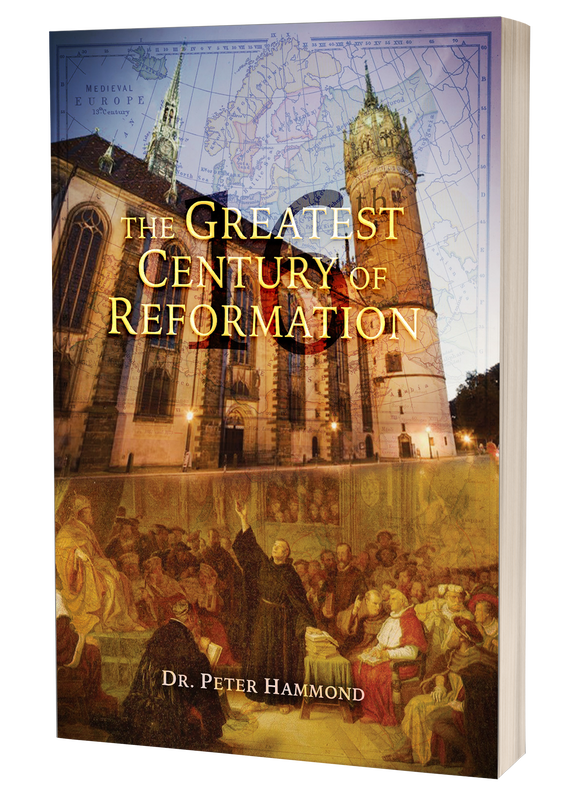
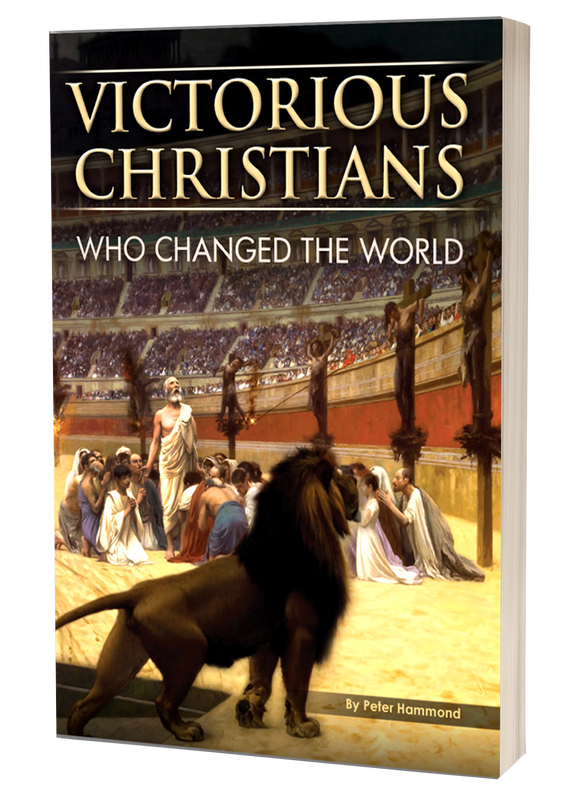


 RSS Feed
RSS Feed

